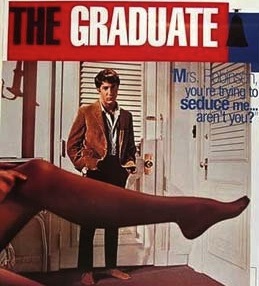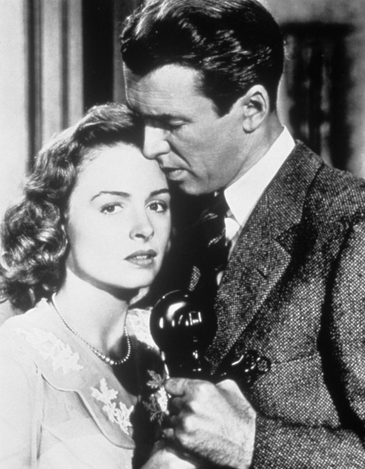Plastic Surgery |
||
GB: As you can readily discern from his biosketch, Todd Gross is one of the most innovative constructors currently plying his craft in the New York Times and other venues, so it was a thrill when Todd and I "met cute" in cyberspace in the latter half of December 2013 [It is Will Shortz's routine to use a single e-mail message to give a simultaneous heads-up to a full week's worth of constructors]. Furthermore, it is a real delight for me to now be able to share with the sophisticated science nerds who gravitate to our web site Todd's not-quite-ready-for-primetime masterpiece with its distinct polymer chemistry vibe. I will let Todd pick up the narrative, although there will yet be an interjection or two from me. |
||
| Mr. McGuire: I just want to say one word to you. Just one word. Benjamin: Yes, sir. Mr. McGuire: Are you listening? Benjamin: Yes, I am. Mr. McGuire: Plastics. |
 |
 |
TG: The above exchange from the 1967 Oscar-winning movie The Graduate is famous enough to make the American Film Institute's 100 Years...100 Movie Quotes list (you can see a clip of it here). But that isn't what inspired me to create this crossword (despite getting my bachelor's degree from UC Berkeley) What inspired me are the colorful names for various kinds of plastic. Not the technical chemical names for the substances [like polyethylene or (more complicated), the IUPAC name for polyurethane which is (among others) "1,4-butanediol-caprolacton-methylenedi-1,4-cyclohexylene isocyanate copolymer"], but the brand names created by companies like DuPont, names like Kevlar, Mylar, Nylon, and Tyvek [yes, Nylon was originally a DuPont brand name before it became generic in the 1950's]. It was natural to take these colorful names and try to make fun puns with them. GB: We interrupt Todd's narrative by sharing a movie clip of our own. Is there anyone out there who has not seen, and been moved by, the scene about an hour into Frank Capra's It's a Wonderful Life where George Bailey (aka GB, played by Jimmy Stewart) and Mary Hatch (played by Donna Reed) finally realize they are meant for each other? Leading up to that, George is offered "the chance of a lifetime" by Sam Wainwright (aka "Hee-Haw," played by Frank Albertson) to invest in plastics. Watch the entire 7.5-min clip, or start at the 5 min point, while reading along in the narrative. [As a personal aside, the screenplay to that film was co-written by Albert Hackett, who many years later became the stepfather of my friend Jenna Orkin.] Let's now get back to chemistry. One of my favorite teaching demos is the "nylon rope trick"—click here for the recipe as written up by the University of Minnesota's Joe Franek, and here for a brief video demonstration (tip-of-the-hat to Todd's Berkeley roots). Pop quiz: True or False? The trade name NYLON is a portmanteau word for New York and London, sites of research laboratories where this vital commercial polymer was developed. Click here for the answer and analysis. TG: As with any large-size puzzle, the first thing I do is make a list of possible theme entries. First, I came up with as many good plastic names as I could, using online lists as well as my own memory. Sticking to ones that are short, colorful, and reasonably well known [have any of you heard of, say, Bynel® or Herox®?], I then tried to come up with puns using those names. Some had multiple possibilities (like VINYL, which can substitite for “final” in lots of phrases), while others are more limited (like EPOXY, which pretty much only works in EPOXY_BOTH_YOUR_HOUSES). I should perhaps apologize to folk who aren't up on their early 80's pop music, given both SPANDEX_BALLET [a play on the band Spandau Ballet ... I later found out it's also the name of a comedy duo] and HUNGRY LYCRA WOLF (a play on the Duran Duran song Hungry Like the Wolf). But I also play on Oscar Wilde's novel The Picture of Dorian Gray and a famous line from Shakespeare's Romeo and Juliet [yes, in the play it's "plague," not "pox," but the latter is commonly used nowadays], so it's not all Baby Boomer nostalgia. When I create Sunday-size puzzles, I try to get theme entries to cross. This creates a more interesting puzzle (I think), because it's harder to see the long vertical spaces, so they're more of a surprise ... especially when they cross other long theme answers. I got really lucky with the six theme entries in the puzzle that they interconnected so well. Around this time, I remembered that plastics are basically long-chain polymers, so wouldn't it be great if I could actually link all the theme entries together. Thus, in the original version of this puzzle [answer grid below, on the left; this is the one which I submitted to the New York Times], I added RAYON_FEAR in the center row, connecting CEREBRAL_GORE-TEX with HUNGRY_LYCRA_WOLF. At the time, I thought this was super awesome! |
||
 |
 |
... but more rational heads prevailed. Will Shortz wasn't so fond of the theme, so I showed it (in the original version) to George, who I figured would get a big kick out of my theme. Well ... he liked the idea, but the puzzle was difficult to solve, and he didn't seem to like the "every theme entry linked together like one big polymer chain" form like I did. GB: Let's make this clear, I love the theme! The puzzle's title, a double-entendre on this, is also highly ingenious. You'll see that Todd's original version is linked to on our main puzzle page. I did try to solve it and ran into problems in several areas, and I concluded that the extra level of "cross-linking" from RAYON_FEAR was just not worth it. Also, in my view, the intercalation/interconnection of the remaining six polymer-based pun chains [two groups of three] was plenty realistic enough. A true tour-de-force of construction!! On behalf of the University of Minnesota, I did appreciate the shout-out to one of our alumni, Robert Gore [no relation, as near as we can tell, to the Tennessee-based political dynasty that includes one-time Senator, Nobel Peace Prize winner, and former Vice President Al Gore Jr., with iconoclast Gore Vidal dangling off a distant branch]. Not only did "our" Gore become wealthy from the invention of Gore-Tex, but it is featured on our Wall of Discovery, and he made a large gift leading to the ongoing construction of the Gore Annex to Amundson Hall, the home of our Department of Chemical Engineering & Materials Science. TG: After getting George's initial feedback, I thought that I could make a more fun-to-solve version of the puzzle—with more black squares and more entries and without that ugly RAYON FEAR [a pun on “prey on fear,” which Googles pretty well] in the center—but then I put the puzzle aside to work on other puzzles [not to mention the Pre-Shortzian Puzzle Project and test-solving for George]. I would have been fine to leave the puzzle unpublished, but George sent me a few e-mails asking about the puzzle. So I bit the bullet and reworked the puzzle into the version you now see [answer grid above, to the right], with three more black squares, six more entries, and nearly every non-theme answer being changed (though, interestingly, VACAY was also in the original puzzle). Speaking of VACAY, I apologize for the entries ORAC and SACO in that upper part of the grid...but with three long vertical entries there, which you really want to be gettable, I was pretty constrained there. Other than those, the only entries I'd really like to change are E-WEAR and COOLE (well, maybe USDT also, especially as it crosses LEU and—sorry George—MSM puzzles do not seem to accept three-letter abbreviations for amino acids). You only get 140 words for a Sunday-sized New York Times puzzle, so it's really easy to be stuck using ugly shorter entries to ensure your longer entries are gettable and colorful. Such puzzles, alas, are not as easy to mold into shape as neoprene. GB: My respect for Todd's mastery of the craft increased when I worked to try to steer the grid away from some of the words that he himself had qualms about [and how ironic that both of Todd's versions used VACAY, albeit in different portions of the respective grids]. I also took the liberty of modifying a handful of Todd's clues. When it comes to redoing clues, I certainly do not operate at the level of other editors who are out there. Finally, in consultation with Todd, we are leaving all of his words in the two grids shown, even though most constructors and editors would probably feel compelled to change at least a few of them, just as a matter of taste. Todd discusses word count and black squares. The revised version of the puzzle, with 140 words and 71 black squares, is well within guidelines, while his original version (the one Shortz passed on) has an insanely low 134 words! No wonder Todd had to use stuff like CSN, OHIO_U, ENSERF, PROCYON, and TEJANO, among other words that more timid constructors might eschew. Finally, Todd's original was missing a Q and a Z, whereas his revised is a pangram! If you want to tell others about this particular page, refer them to http://tinyurl.com/plasticmidrash |
View My Stats